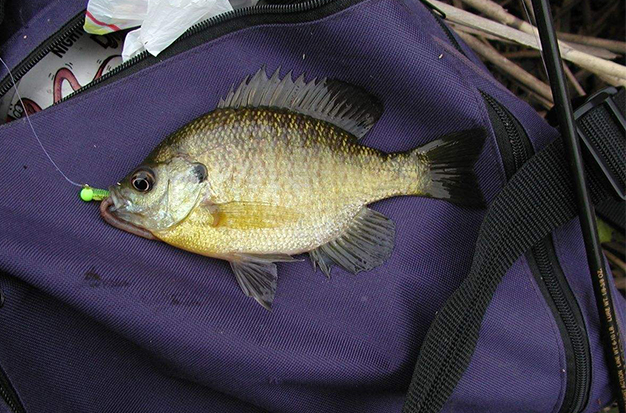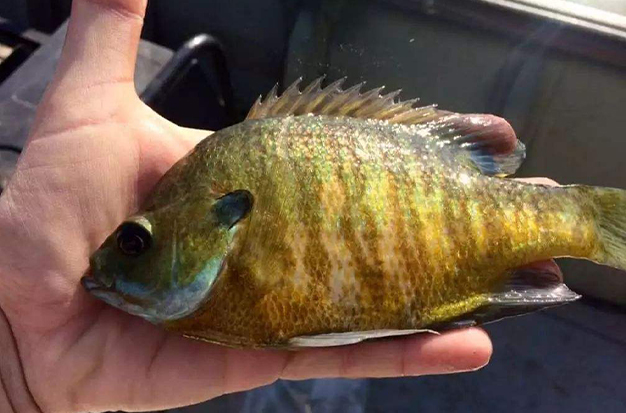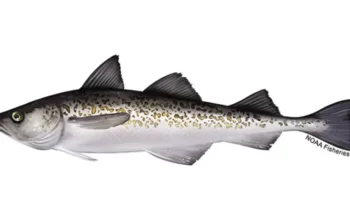How Should Bluegill Be Fileted? Nowadays, it seems like most people choose to fillet their catch to get ready-to-cook chunks of meat that are boneless and skinless. Here is how to quickly prepare a fillet using an electric or fixed-blade fillet knife. Place the fish on a plate or a cutting board. To start, another hard, flat surface Place the filleting knife just behind the side (pectoral) fin of the fish while holding it by the mouth. Keep the knife’s backside up as you slice down to the backbone. Avoid cutting the fish’s spine at all costs.
Maintaining contact with the back and belly fins, turn the knife’s blade toward the tail and continue to cut. You’ll encounter resistance as you miss through the rib cage, but take care not to sever the backbone. It is better to make a shallow cut than a deep one.
Table of Contents
What Are Bluegills?
Panfish of the bluegill variety are also known as sunfish. The bluegill can be located when panfishing in weedy areas and close to docks and logs. Once caught, cleaning, gutting, and cooking bluegill are fairly straightforward tasks. The most common way to cook the fish is by frying it in a skillet. The dish will taste better if the fish is cooked with butter, buttery graham crackers, and seasoning.
What Bluegill Filleting Technique Is The Simplest?
The simplest method for filleting a bluegill is to use a sharp knife. Make shallow cuts through the backbone of the fish while holding it horizontally with the blade pointing downward. Continue to cut until the fillet is boneless by flipping the fish over so the flat side is facing you.
How To Fillet Bluegill?
Once you’ve nearly, but not quite, removed the scaly fillet, keep cutting in the direction of the tail.
The fillet should be flipped away from the fish while it is still barely attached to the tail. In order to remove the fillet from the Bluegill fish, place your knife on the narrow end of the fillet and make a cut between the skin and the meat while still holding the fish. To obtain the most flesh, cut very nearly to the skin. Lay the fillet, with the rib cage still attached, on a piece of wax paper after it has been extracted. Flip the fish over, then filet the other side.
Finish by taking each fillet and using the point of your fillet knife to carefully remove the rib cage. To extract the most meat, slant your knife and make close cuts to the ribs. The fillets are ready to cook or store after rinsing.
How Should I Use My Electric Knife To Filet Bluegill?
Choosing where to stop cutting and where to divide the fish into sections is crucial before you begin filleting. Using this will enable you to quickly and effectively cut your fish. It is now time to begin filleting the fish after deciding how to section it.
Note: When filleting bluegill, you can choose to cut up each side of the green gill using either the top or bottom of the stomach as a guide; this choice is entirely up to you and what feels right for your fillet knife skills.
Step 1 – Cutting Through The Skin
Start by making a shallow cut at one of your cut lines. When using an electric knife, it’s important to begin cutting just beneath the skin rather than inline with it. This will help you avoid errors and make sure your cuts are straight. To avoid slicing any of the fish’s internal meat, move your knife slowly and carefully. The best tools to use when filleting bluegill are a large fillet knife or even an electric fillet knife because they give you access to every part of the fish without harming any of its muscle meat.
Step 2 – Cutting Through Bones
Use short strokes to cut through any bones after you have reached your first cut line in order to avoid damaging the electric knife’s blade. When attempting to penetrate any ribs or stray bones in the bluegill, use long, flat strokes. Take your time because this is harder than it seems and may require several tries before you can penetrate these areas of bone. (Note: Getting assistance from a second person may be helpful if you have trouble breaking through ribs or sizable chunks of loose, irregular bone.)
Step 3 – Trimming Off Excess Meat
Trim off any extra meat that hangs outside the fillet area after using your electric knife to cut through any significant bones. To remove this extra meat, make quick strokes while attempting to minimize slicing into the fillet itself. Use long, slow strokes to cut through your second set of cuts after trimming away all extra meat from around your first set of cuts. In this area, the bluegill’s white meat will be visible beneath the skin.
Step 4 – Removing Any Tiny Bones
Make sure there are no additional tiniest fragments of bone or tough cartilage between this layer and the meat now that you have reached the bottom of the fillet. In order to remove anything stuck in your previous cuts, use short strokes while gently pressing against a flat surface, such as a cutting board, with your other hand.
Once you have removed all of the small bones and cartilage from your bluegill fillets, you are finished. Try it; once you’ve mastered the technique, filleting bluegill will take you about ten minutes.

How Should Bluegill Fillets Be Cooked?
Freshwater bluegill fish has a mild flavor and is delicious when fried or quickly cooked on the stovetop. Bluegills have meaty, not overly fishy, sweet, white, flaky flesh.
This deep-fried dish is delectable, easy, efficient, and straightforward. Cracker crumbs, flour, corn flakes, milk, eggs, and melted butter are used as bluegill filler materials.
470 calories, 29 grams of fat (7 of which are saturated), 325 mg of cholesterol, 707 mg of sodium, 15 grams of carbs, 1 gram of fiber, and 36 grams of protein make up a single serving of food (four ounces).
Ingredients:
- 1 1/2 lbs fresh Bluegill fillets
- 1 Egg
- 1 Cup of flour
- 6 oz. milk
- 1 Cup of cracker crumbs
- 1/2 Cup of corn flakes
- 2 tsp. Salt
- 1 tsp. Pepper
Directions:
- After being rinsed in cold water, fillets should be dried with paper towels.
- Heat the deep fryer to 370°F/170°C.
- Mix the milk, egg, salt, and pepper in a mixing bowl thoroughly.
- Blend the mixture after gradually incorporating small amounts of flour.
- Corn flakes and cracker crumbs should be combined in a small mixing bowl.
- Before putting the fillets in the hot deep fryer, the fillets are dipped in batter and then coated with a mixture of cracker crumbs.
- Fry the fillets for 4 minutes, or until golden brown.
- Remove from the deep fryer and let dry on paper towels.
A cheap option are these deep-fried bluegill fillets. It takes only 15 to 20 minutes to prepare and is tasty, quick, and easy to make.
Conclusion
Use slow, steady motions to slice the fish’s body at either end (typically near or under the stomach). An excellent electric knife won’t lose its sharpness after several uses, unlike other knives, which have a tendency to become soft quickly.
Because of this, practically anyone can handle it easily and safely. Additionally, they enable you to fillet large fish without harming the muscles underneath.
The alternative technique is applied in the same manner as the conventional method to get rid of bluegill. The main and obvious difference is that traditionally, you would not clip the fish off the rib bones. In this method, the tail is cut first, then the fish’s belly is passed halfway through the fillet.
If you liked reading this article, you might also be interested in learning how to catch bluegill.




